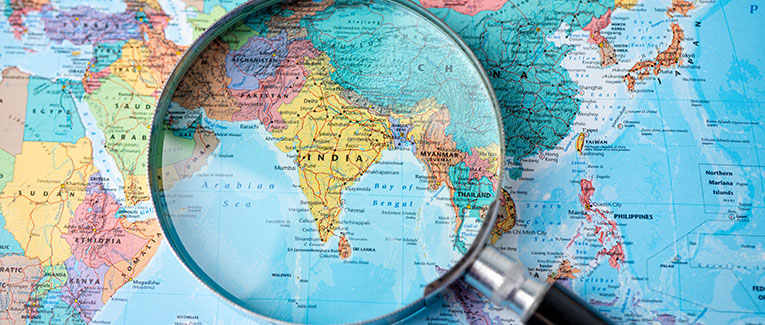
The Foreigner (Protected Areas) Act requires foreigners to obtain a Protected Area Permit (PAP) to visit certain areas in India. This requirement is in addition to getting an Indian visa. In order to get this permit, you must meet certain requirements. Such restriction is in place due to security reasons.
Even Indian citizens who are not residents of those areas require an Inner Line Permit (ILP) to enter these places. The Inner Line Permit is significantly easier to get. However, NRIs (Indians who are staying abroad for more than 6 months), and OCI holders are not eligible for Inner Line Permit. They will have to apply for a regular Protected/Restricted Area Permit.
However, most of these areas are remote and away from normal tourist destinations. Some tourists still visit restricted areas because they are very beautiful and fascinating remote places.
Please keep in mind that Protected/Restricted Areas are not necessarily dangerous to foreign travelers. However, there may be other parts of India that may be dangerous to foreign travelers, even though no special permit may be required to visit those areas.
Requirements
- A foreigner must enter/exit the Northeastern states by air only.
- Tourists are permitted to visit ONLY the designated places and for the period for which they are authorized.
- The permit is valid only for the specific tourist circuit/route and specific entry/exit points. No area other than the ones indicated in the permit should be visited.
- A permit is valid for tourist groups of two or more travelers.
- A permit cannot be extended under any circumstances.
- As the permit holder may be required to submit a copy at each point of entry or exit, they must keep sufficient copies handy.
- The permit holder can travel within the Northeastern states by road or by air. However, while traveling by road, the route should largely make use of the national highways.
Issues
Hypothetically, a native of Arunachal Pradesh (one of the Protected Area) goes to the USA on an H1B visa and stays for 6 years. While in the USA, he marries a US Citizen and has a child born in the USA, also a US citizen. If he wants to return to his native place for permanent settlement, his entire family can’t settle there. This is because foreign citizens are given permission only for 10 days with a possible extension of 7 more days. They are not allowed to permanently settle in Protected/Restricted Areas. Long-term or permanent permits are not given to non-Indian family members, not even to persons of Indian origin but foreign citizens now.
Restrictions for protected/restricted areas are in place for security reasons and to protect, from outside influence, the culture of native people living there. However, as it is easy to get an Inner Line Permit for Indian citizens, many Indians from other regions are moving to protected/restricted areas. It is unsure whether temporary visiting tourists would have more of a cultural impact on the native people than many Indians with significantly different cultural backgrounds from other areas of the country.
Protected Areas
- Arunachal Pradesh, Manipur, Mizoram, Nagaland, Sikkim (partly in Protected Area and partly in Restricted Area)
- Parts of Himachal Pradesh, Jammu & Kashmir, and Rajasthan, Uttarakhand
Restricted Areas
- Andaman & Nicobar Islands
- Sikkim (partly in Protected Area and partly in Restricted Area)
Restricted Areas
- Andaman & Nicobar Islands
- Sikkim (partly in Protected Area and partly in Restricted Area)
Issuance of Permit
The Restricted Area Permit can be issued by:
- Indian Embassy/Consulates abroad
- Immigration officer
- Ministry of Home Affairs, Government of India, Lok Nayak Bhawan, New Delhi
- All Foreigner Regional Registration Offices (FRRO) at Delhi, Mumbai, Kolkata, Chennai, Amritsar, Hyderabad and Bangalore
The Protected Area Permit can be issued by:
- Indian Embassy/Consulates abroad
- Ministry of Home Affairs, Government of India, Lok Nayak Bhawan, New Delhi
- All Foreigner Regional Registration Offices (FRRO) at Delhi, Mumbai, Kolkata, Chennai, Amritsar, Hyderabad and Bangalore
- Many home commisionsers, resident commissioners and deputy resident commissioners of respective state governments
Application
Protect Area Permit Form, 3 copies
There is $30 fee for Protected/Restricted Area Permits for all nationalities.
The applicant should also enclose 2 copies of passport as well as 2 passport size photographs.
A PAP is normally issued for 10 days and has a option of a 7 day extension. The PAP is issued by the Ministry of Home Affairs. Also, different authorities of the concerned Indian states, FRROs, and Indian missions abroad can also issue such permit. Normally, your travel agent should be able to get the PAP for you.
Exception: Citizens of Pakistan, Bangladesh, China and Myanmar (Burma) can get the PAP only with the approval of the Ministry of Home Affairs.

